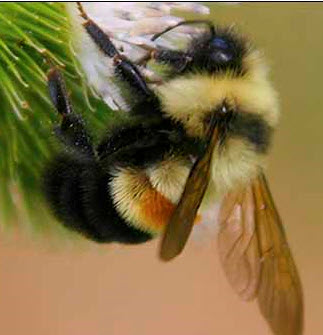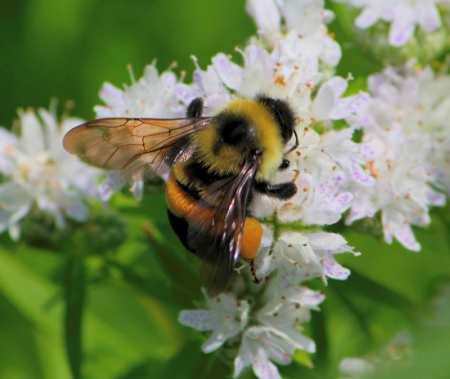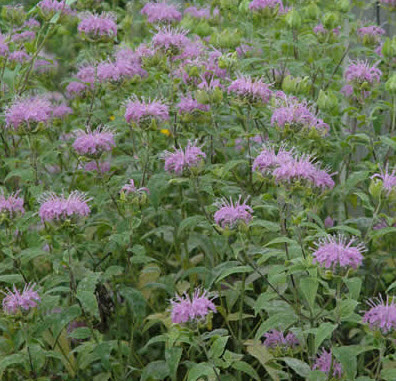Click below to listen to my 2 min. Garden Bite radio show: Rusty patched bumblebees
Yesterday I talked about the endangered dwarf trout lily, today, I’ll take you back to the rusty patched bumblebee (Bombus affinis). Last year, the U.S. Fish and Wildlife Service announced that the bumblebee is now protected under the Endangered Species Act.

Over the past two decades its population has declined 87 percent. Once common and abundant across 28 states from Connecticut to South Dakota, the rusty patched bumble bee has experienced a swift and dramatic decline since the late 1990s. What’s left of the this bumblebee is scattered populations in 13 states including Minnesota, Wisconsin, Iowa and Illinois.

Over the past two decades its population has declined 87 percent. Once common and abundant across 28 states from Connecticut to South Dakota, the rusty patched bumble bee has experienced a swift and dramatic decline since the late 1990s. What’s left of the this bumblebee is scattered populations in 13 states including Minnesota, Wisconsin, Iowa and Illinois.
Why? That’s a big question with a lot of different answers. The Xerces Society has several hypotheses. If you click on the link, you’ll find out even more information.

The rusty patched bumble bee once lived in grasslands and prairies of the Upper Midwest, but many of those areas are gone. It emerges in early spring and is one of the last bumble bee species to go into hibernation in the fall. Because it is active so long, it needs a constant supply of flowers blooming from April through September.
What’s a gardener to do? Plant native flowers, even in small plots in urban areas, using a variety that will bloom from spring through fall. Limit or avoid use of pesticides if possible, and always follow label instructions carefully. Foster natural landscapes and leave grass and garden plants uncut after summer to provide habitat for overwintering bees.
Use native plants in your yard such as lupines, asters, bee balm, native prairie plants and spring ephemerals. Don’t forget spring blooming shrubs like ninebark and pussy willow! Avoid invasive non-native plants and remove them if they invade your yard. For more information on attracting native pollinators, visit www.fws.gov/pollinators/pdfs/PollinatorBookletFinalrevWeb.pdf.

Bee balm – native

Pussy Willow blooming
